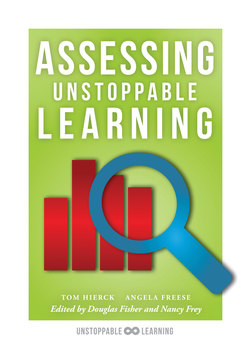Читать книгу Assessing Unstoppable Learning - Tom Hierck - Страница 9
На сайте Литреса книга снята с продажи.
ОглавлениеForeword
By Douglas Fisher and Nancy Frey
We have spent the past several decades trying to figure out ways to help teachers decide what to teach and how to teach it. In other words, we are in search of the links between curriculum (what to teach) and instruction (how to teach it), which we see as two sides of the same coin. Assessment is the key that guides teachers as they grapple with answering the question of what they will teach and how. Before we discuss that, however, it’s important to consider the influences on curriculum and instruction beyond assessments. Yes, assessment data should guide teachers’ curriculum and instruction, but there are other factors at play.
There have been any number of curriculum wars as various groups attempt to influence what students learn in school. Examples of these curriculum debate topics range from phonics to evolution. Members of the public, especially through standards-setting boards, have profound sway on what gets taught in school. This is both good and bad. We do think that there should be appropriately rigorous expectations for students and that the curriculum needs to ensure that students develop a range of skills and strategies. We also believe that teachers can use assessments to identify the gap between what students already know and can do, and what they still need to learn. This gap is where the content, or curriculum, students need to experience resides.
But the official curriculum is only part of the story. Most political debates are about the official curriculum, but teachers need to think of curriculum in a more expansive way. George Posner (2004) notes that there are at least five aspects to the curriculum:
1. The official curriculum, or written curriculum, gives the basic lesson plan teachers are to follow, including objectives, sequence, and materials. This provides the basis for accountability.
2. The operational curriculum is what the teacher teaches in class and how he or she communicates; this curriculum includes the learning outcomes for the student.
3. The hidden curriculum includes the norms and values of the surrounding society. These are stronger and more durable than the first two aspects, and may be in conflict with them.
4. The null curriculum consists of what is not taught. Educators must consider the reasons why things are not included in the official or operational curriculum.
5. The extra curriculum includes the planned experiences outside of the specific educational session.
The other side of the coin is instruction, or how students will learn the content that will close the gap. There are far fewer political debates about instruction, and teachers are generally able to plan learning experiences for students. Of course, the amount of freedom teachers have to select instructional routines has varied from decade to decade. For example, in the world of reading, the 1990s were marked by scripted and prescriptive approaches to instruction (as well as expected fidelity to a specific curriculum). As we write this foreword, there is a loosening of these expectations, and an increase in the expectation that teachers exercise their professional judgement in deciding how to engage their students in meaningful learning experiences.
Having said that, we are not suggesting that teachers choose randomly from a set of instructional routines and strategies. Instructional decisions should be guided by data. Some of the data can come from educational research. Teachers should know which instructional approaches are more likely than others to ensure that students learn. This is a good starting place for selecting strategies, but it is not the only place. Teachers should use assessment data to determine if the instructional approaches they have selected have impacted students’ learning. If they have, great. If not, then teachers should change their approach. Teachers should never be so enamored with an instructional approach that they continue to use it, even in the face of assessment data that indicate a lack of learning.
See, assessment is the driver that teachers can use to ensure that students learn and that learning becomes unstoppable. Assessments should guide the decisions that teachers make about both the curriculum and the instruction, and those decisions should ensure that students achieve at high levels. That’s why we appreciate this book so much. Tom Hierck and Angela Freese have provided us with a systematic approach to collecting and using assessment data that can guide these very important decisions that teachers need to make. When implemented, the ideas that Hierck and Freese suggest guarantee that students learn and that teachers can exercise their professional expertise in collaboration with their colleagues. But even more important, when strong assessment systems are in place, students assume increased responsibility for their own learning and learn beyond the walls of the classroom. And isn’t that our collective goal—that students learn on their own for the rest of their lives?
